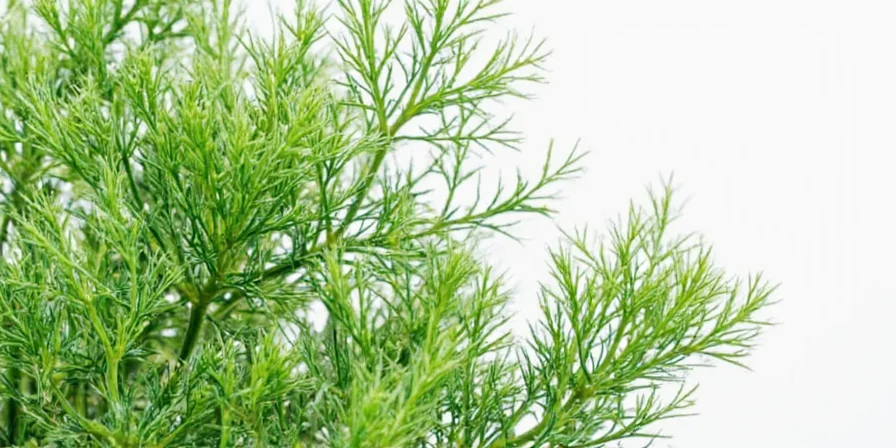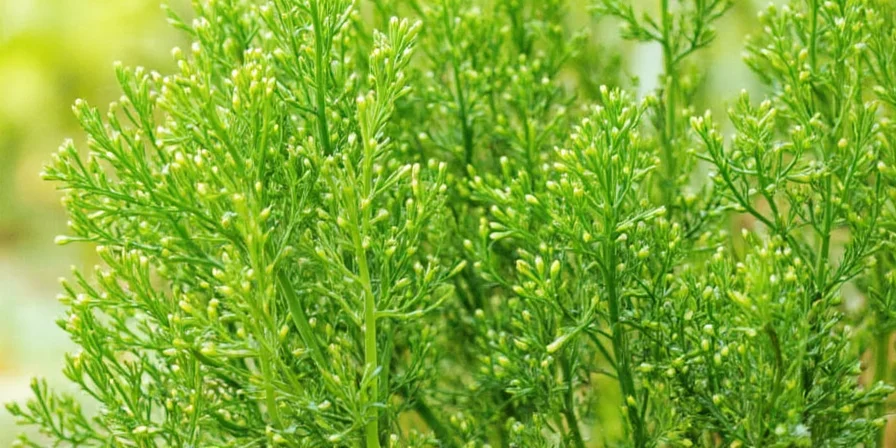What Are Dill Fronds and Why You Should Care
Dill fronds are the delicate, feathery green leaves of the dill plant - the part most home cooks accidentally throw away. Unlike the hard dill seeds found in your spice rack, these soft leaves deliver fresh, grassy flavor perfect for everyday cooking. This guide shows you exactly how to use them properly, store them to last longer, and avoid common mistakes that waste this flavorful herb.
If you've ever bought fresh dill only to watch it wilt in days, or wondered why your dill recipes never taste like restaurant dishes, you'll discover practical solutions used by home cooks who never waste this herb. No complicated science - just straightforward techniques that work in real kitchens.
Dill Fronds Explained Simply
When you buy fresh dill from the grocery store, the feathery green parts are dill fronds. They're completely edible and packed with fresh flavor, while the hard brown parts at the bottom are dill seeds (which need to be removed before use).
Think of it like parsley or cilantro - the leaves are what you want for fresh flavor. Dill fronds have a light, slightly sweet taste that works best when added at the end of cooking. Unlike dried dill weed (which comes from the seeds), fresh fronds lose their flavor when cooked too long.
Dill Fronds vs Dill Seeds: What Home Cooks Need to Know
Understanding this simple difference will transform your cooking:
| Feature | Dill Fronds (Fresh Leaves) | Dill Seeds |
|---|---|---|
| Best Used In | Fish, salads, dips, dressings (added at the end) | Pickles, breads, stews (cooked longer) |
| Flavor Profile | Fresh, grassy, light | Stronger, earthy, spicy |
| Storage Life | 1-2 weeks with proper storage | 2-3 years in spice cabinet |
| Substitution Tip | Use 3x more than dried dill | Use 1/3 less than fresh fronds |

Easy Ways to Use Dill Fronds in Home Cooking
Stop wasting these flavorful leaves with these practical methods anyone can do:
- Perfect Fish Topping - Sprinkle chopped fronds over salmon or white fish during the last 5 minutes of cooking
- Instant Dip Upgrade - Mix 2 tablespoons chopped fronds into sour cream or Greek yogurt for quick dill dip
- Salad Secret - Toss whole small fronds directly into potato or cucumber salads
- Freezer Hack - Chop fronds, mix with olive oil, and freeze in ice cube trays for ready-to-use portions
- Pickling Boost - Place whole fronds at the bottom of jars when making refrigerator pickles
Simple Storage Methods That Actually Work
Make your fresh dill last 2-3 times longer with these home-friendly techniques:
- Water Vase Method - Trim stem ends, place in a glass with 1 inch of water, cover loosely with plastic bag, and store in fridge (change water every 3 days)
- Damp Paper Towel Trick - Wrap fronds in slightly damp paper towels before placing in airtight container
- Herb Keeper Shortcut - If you have one, use the vegetable drawer with high humidity setting
- Freeze for Later - Chop fronds, mix with water or oil, and freeze in ice cube trays (use within 6 months)

Basic Health Benefits of Dill Fronds
Fresh dill fronds offer these simple wellness benefits:
- Good source of vitamin C and vitamin A
- Contains antioxidants that support overall health
- May aid digestion when eaten fresh with meals
- Low calorie flavor boost for healthy cooking
While not a superfood, adding fresh dill to your meals is an easy way to enhance flavor without extra salt or fat.
Quick Historical Fact
Ancient Greeks and Romans considered dill a symbol of wealth. They'd rub dill fronds on their bodies before special occasions because the fresh scent was associated with prosperity. This is why dill remains popular in celebratory dishes across European cuisines.
Real Questions Home Cooks Ask
Can I use dill fronds instead of dried dill?
Yes, but use 3 times more fresh fronds than dried dill. Add fronds at the end of cooking, while dried dill works better when added earlier.
Why does my dill turn brown so fast?
Dill wilts quickly when stored dry. Keep it in water like flowers, change water every few days, and it will stay fresh much longer.
What's the best way to freeze dill fronds?
Chop fronds, mix with olive oil, and freeze in ice cube trays. Pop out cubes and store in freezer bags for up to 6 months.
Can I grow dill at home?
Yes! Dill grows easily in containers or gardens. Snip fronds as needed and it will keep producing all season. Just make sure it gets plenty of sunlight.
What foods pair best with dill fronds?
Dill fronds love fish, potatoes, cucumbers, eggs, and creamy sauces. Try them in tuna salad, roasted potatoes, or mixed into sour cream for a quick dip.
Start Using Dill Fronds Today
Dill fronds aren't just pretty garnish - they're packed with fresh flavor that elevates everyday meals. By storing them properly in water and adding them at the end of cooking, you'll get the most flavor from this often-wasted herb. The next time you buy fresh dill, use every part and enjoy restaurant-quality results at home.
Remember these three simple rules: store in water, add at the end of cooking, and freeze extras in oil. You'll waste less, cook better, and discover why professional chefs always keep fresh dill on hand.











 浙公网安备
33010002000092号
浙公网安备
33010002000092号 浙B2-20120091-4
浙B2-20120091-4